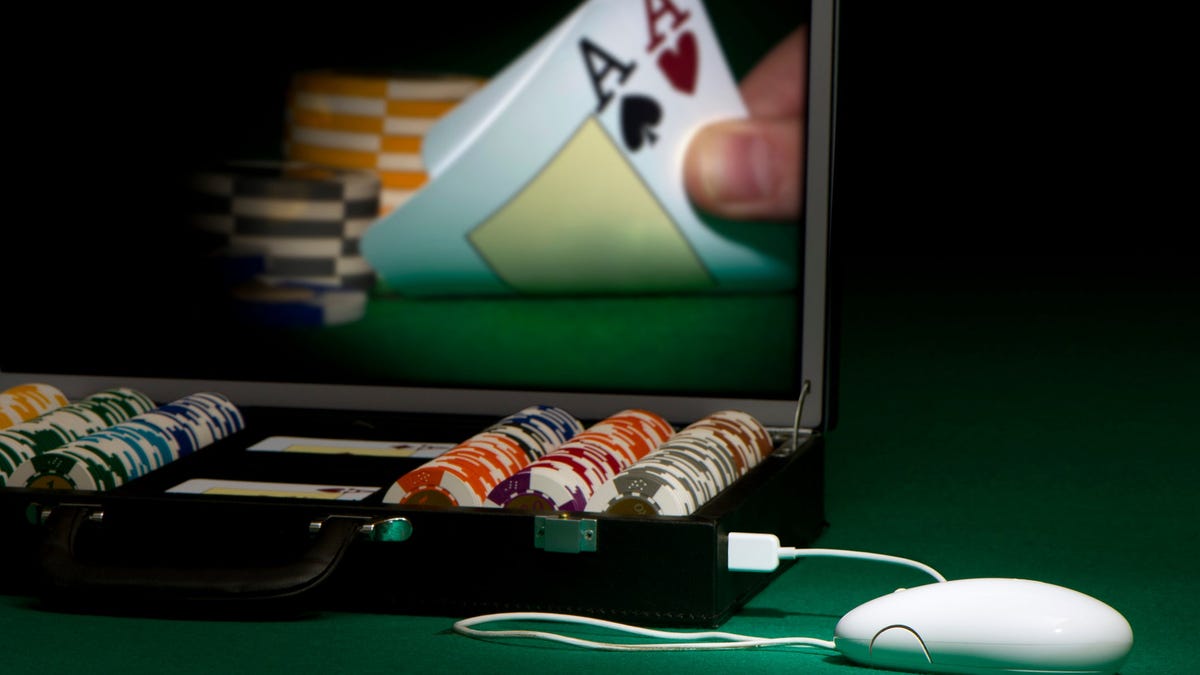Washington
Powerball player John Cheeks denied $340M lottery jackpot over website ‘mistake’

The unluck of the draw.
A Powerball player claims he was denied a life-changing jackpot worth $340 million despite his numbers matching the lottery’s website last year, which the company claims was a “mistake.”
Now, he’s suing Powerball and the DC Lottery
John Cheeks bought a Powerball ticket on Jan. 6, 2023, when the jackpot rose to the $340 million prize, according to a complaint filed last November.
Cheeks, who told NBC 4 he purchased the ticket using his family birthdates, missed the live drawing on Jan. 7, but wasn’t in a rush to check his numbers since the odds of winning a Powerball jackpot is about 1 in 292.2 million.
He claimed he checked the DC Lottery’s website the following day and saw his winning numbers, believing he had become the year’s first multimillionaire.
“I just politely called a friend. I took a picture as he recommended, and that was it. I went to sleep,” Cheeks told the outlet.
For three days, the DC Lottery website showed his ticket numbers, according to the complaint.
The numbers posted on the website, however, differed from those pulled during the live Powerball broadcast.
He tried to redeem the ticket at a licensed retailer on Jan. 10 and discovered none of his numbers matched up to what was drawn live.
Cheeks claimed he then went to the DC Office of Lottery and Gaming prize center to check with them, but again, he was told he was not the winner.
“’Hey, this ticket is no good. Just throw it in the trash can,’” Cheeks recalled to the outlet. “And I gave him a stern look. I said, ‘In the trash can?’ ‘Oh yeah, just throw it away. You’re not gonna get paid. There’s a trash can right there.’”
Cheeks has since placed the ticket in a safety deposit box.
Cheek’s attorney, Richard Evans, said his client was eventually informed by a lottery contractor that Taoti Enterprises — a DC-based digital advertising agency that manages the DC Lottery’s website — made a “mistake” and posted the wrong numbers.
“They have said that one of their contractors made a mistake,” Evans told NBC 4. “I haven’t seen the evidence to support that yet.”
Despite Cheeks not having the correct numbers of the live drawing, Evan feels that something needs to be done for his client.
“Even if a mistake was made, the question becomes: What do you do about that?”
The jackpot eventually grew to $754.6 million before a ticketholder in Washington claimed the prize on Feb. 6.
In Nov. 2023, Iowa lottery officials blamed “human reporting error” for posting the incorrect numbers, which remained on its website for over six hours.
Those who were up and cashed their tickets were able to claim their prize, which ranged from $4 to $200, according to Fox 9.

Washington
Maps show where Iranian President Ebrahim Raisi’s helicopter was found

Rescue teams struggled to reach the area where the helicopter was believed to have landed amid poor visibility, state media said.
During a television broadcast, an International Red Cross and Red Crescent official described the active search area, 55 miles north of the provincial capital of Tabriz, as roughly 20 to 30 square miles in mountainous terrain.
Washington
Washington takes aim at Spartina, spongy moth

Washington’s State Department of Agriculture is ramping up treatments against two invasive species – the spongy moth and the aggressive Spartina weed.
Spongy moth
A low-flying airplane began treatments to eradicate spongy moth caterpillars on May 10, with plans to aerially treat about 1400 acres in Thurston County and 900 acres in Skagit County with a naturally occurring soil bacteria, Btk (Bacillus thuringiensis var. kurstaki). Because the Skagit County site is in a cooler climate, treatments were anticipated to start there mid- to late-May.
The sites will each be treated three times, with applications approximately 3 – 10 days apart. All treatments are weather dependent and the schedule is subject to change. WSDA expects to complete all applications by early June.
Because weather conditions heavily influence when treatments occur, WSDA advises people in or near the treatment areas to visit agr.wa.gov/moths to sign up for e-mail, text or robo-call alerts that are issued the day before applications are scheduled to take place. Changes in scheduled treatments will also be shared through these notification systems. WSDA also mailed multiple postcards to residents in and near the treatment areas advising them of the upcoming treatments. The public can enter an address in a map on the agency website to determine whether their residence is within or near the treatment area.
According to the Washington State Department of Health, Btk poses very low risk to humans, pets, birds, fish and bees. Btk is found naturally in the environment and has an excellent safety record while also being effective for spongy moth eradication. Although the risk to humans is low, as a precaution, DOH recommends that people who wish to minimize their exposure to the spray remain indoors with doors and windows closed during spraying and for 30 minutes afterward. Let the spray dry before allowing children to play outside, wash with soap and water if you do have skin contact with the spray, and rinse your eyes with water if eye contact occurs.
Btk is sticky. Residents in the treatment areas may choose to cover cars parked outside and bring in toys, etc. to protect them from the spray. However, Btk can be cleaned off outdoor articles with soap and water.
This is the 50th year of the spongy moth program at WSDA. It has been one of the most successful pest detection and eradication programs in the country, preventing spongy moths from establishing in the state and protecting our environment, communities and agriculture from this destructive, invasive pest. The program has trapped for spongy moths (known as gypsy moths when the program started) since 1974 and conducted the first eradication program in 1979. The WSDA Pest Program has safely eradicated every spongy moth population attempting to establish in the state since the program began.
Spongy moths pose a serious threat to Washington’s environment, with the caterpillars feeding on over 300 types of trees, plants and shrubs. The pest is permanently established in 20 states across the Northeast and Midwest, where it has defoliated millions of acres of forest and urban trees. In 2017, spongy moth caterpillars defoliated one-third of the entire state of Massachusetts and in 2018, they lost about one-quarter of their hardwood trees, including three-quarters of their oak trees, in large part due to spongy moth infestations.
If spongy moth were to become established in Washington, it would threaten forest ecosystems, defoliate or kill trees and shrubs in backyards and parks, lead to quarantine restrictions on forest products and horticulture, and result in long-term increased homeowner pesticide use.
Visit the agency’s spongy moth web page at agr.wa.gov/moths to learn more or contact the WSDA Pest Program at [email protected] or 1-800-443-6684.
Spartina
This year’s treatment season for Spartina, an aggressive invasive weed, starts June 1 and will continue through November.
Eradication efforts will take place in multiple areas, including Grays Harbor, Hood Canal, Willapa Bay, Puget Sound, the north and west sides of the Olympic Peninsula and near the mouth of the Columbia River.
This year’s efforts build on the work completed last season when thorough surveys detected recently established Spartina within restored wetlands in the North Puget Sound. The project partners will work to stop the trend of Spartina spreading into and impacting important restoration projects. Since 1995, WSDA has served as the lead state agency for Spartina eradication, facilitating the cooperation of local, state, federal and tribal governments; universities; interested groups; and private landowners. The cooperative effort located and treated over 17,000 individual Spartina plants last year.
The Spartina eradication effort has been highly effective – reducing infestations from a high of more than 9,000 solid acres in 2003 to just over four total acres in 2023.
The effort has successfully eradicated Spartina at 75 sites, however significant work remains to be done. The four remaining acres are spread over 126 sites – meaning 62 percent of Washington’s known infestations are not yet eradicated.
“Our goal is to eradicate Washington’s remaining Spartina infestations, protecting important habitat for salmon, waterfowl and shellfish,” said Chad Phillips, WSDA’s Spartina Program Coordinator. “The Spartina Eradication Program protects our state’s most productive estuaries and shoreline habitats. This year, with our project cooperators, we will continue the challenging work of finding and removing the thousands of Spartina plants that remain in the Puget Sound and along Washington’s coast.”
This season, project partners will survey thousands of acres of saltwater estuaries and hundreds of miles of shoreline. WSDA and its partners typically dig out small infestations by hand and utilize herbicides at larger sites.
Spartina, commonly known as cordgrass, can disrupt the ecosystems of native saltwater estuaries. If left unchecked, Spartina outcompetes native vegetation and converts ecologically healthy mudflats and estuaries into solid Spartina meadows. As a result, important habitat for salmon, forage fish, invertebrates, shorebirds and waterfowl are lost, the threat of flooding is increased, and the state’s shellfish industry is negatively impacted.
Visit agr.wa.gov to for more information on Spartina control efforts.
Source: Washington State Department of Agriculture
Washington
Washington alum Jayden Johannsen returning to MVFC and transferring to Murray State

SIOUX FALLS, S.D. (Dakota News Now) – Five years after transferring out of North Dakota State, a former Washington High School star is coming back to the Missouri Valley Football Conference with the chance to play his former school as well as the programs from his home state.
After four stellar seasons at Division Two South Dakota Mines, quarterback Jayden Johannsen will transfer and play his final season of eligibility with the Division FCS Murray State Racers.
At Washington Jayden was a three year starter under center for the Warriors, passing for 2100 yards and 22 touchdowns while rushing for 300 yards and five more scores, helping lead the Warriors to 33 straight wins and three 11AAA state titles.
After graduating in 2019 Johannsen initially went to NDSU but transferred to Mines after one redshirt year where he would throw for nearly 8200 yards and 74 touchdowns and run for another 1600 yards and 24 from 2020 through 2023. He was nominated in 2022 for the Harlon Hill award, Division Two’s version of the Heisman Trophy.
With the addition of Johannsen the Racers now have five quarterbacks on their roster. However, with the other four quarterbacks having combined to play only one game at the college level, Jayden’s experience gives him a good chance to be Murray State’s starting quarterback in 2024.
Should that happen it coincidentally comes in a year where the Racers will play all four Dakota schools. Jayden’s first game against a school from his home state would be against the University of South Dakota in Kentucky on October 5th. A few weeks later, on October 26th, he’d face the program he began his college career with, North Dakota State, also in Murray, Kentucky. Then a week later, on November 2nd, he’d come back to native soil for the Racers game at two-time defending FCS National Champion South Dakota State in Brookings.
Copyright 2024 Dakota News Now. All rights reserved.
-

 News1 week ago
News1 week agoSkeletal remains found almost 40 years ago identified as woman who disappeared in 1968
-

 World1 week ago
World1 week agoIndia Lok Sabha election 2024 Phase 4: Who votes and what’s at stake?
-

 Movie Reviews1 week ago
Movie Reviews1 week ago“Kingdom of the Planet of the Apes”: Disney's New Kingdom is Far From Magical (Movie Review)
-

 World1 week ago
World1 week agoUkraine’s military chief admits ‘difficult situation’ in Kharkiv region
-

 Politics1 week ago
Politics1 week agoTales from the trail: The blue states Trump eyes to turn red in November
-

 World1 week ago
World1 week agoBorrell: Spain, Ireland and others could recognise Palestine on 21 May
-

 World1 week ago
World1 week agoCatalans vote in crucial regional election for the separatist movement
-

 Politics1 week ago
Politics1 week agoNorth Dakota gov, former presidential candidate Doug Burgum front and center at Trump New Jersey rally

















